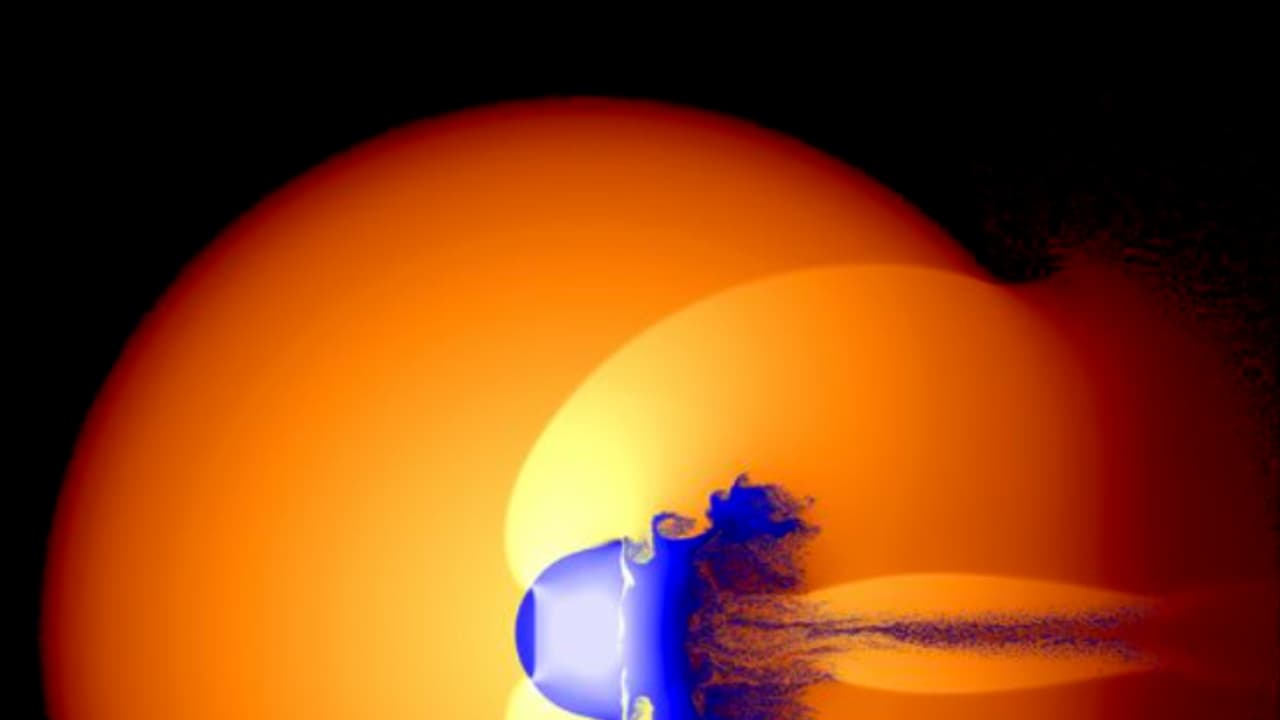New research reveals Jupiter’s core isn’t the result of a massive collision but formed gradually as the planet gathered heavy and light elements. Findings reshape our understanding of giant planets like Jupiter, Saturn, and distant exoplanets.
For decades, astronomers believed that Jupiter’s unusual interior was the scar of a violent past — the aftermath of a massive collision with another young planet. But new research suggests the story is far less dramatic. Instead of being born from a cataclysm, Jupiter’s “fuzzy” core may have formed slowly and naturally as the giant planet grew.
A Fuzzy Core, Not a Solid One
Jupiter is the largest planet in our solar system, but deep inside it doesn’t have the solid, well-defined core scientists once expected. Data from NASA’s Juno spacecraft showed that the planet’s heart is “dilute,” meaning it gradually blends into the surrounding layers of hydrogen and helium instead of forming a sharp boundary.
This raised a big question: was a colossal impact responsible for creating this strange structure?
Supercomputer Simulations Say Otherwise
To find out, researchers from Durham University, working with NASA, SETI, and the University of Oslo, ran advanced simulations on one of the UK’s most powerful supercomputers. They tested scenarios where a giant planet-sized object slammed into Jupiter early in its history.
The results were surprising: even under extreme conditions, the simulations showed that Jupiter’s interior would eventually settle back into layers with clear boundaries. A stable “fuzzy” core never formed in these impact scenarios.
In other words, a single catastrophic event couldn’t explain what we see inside Jupiter today.
A Slow and Steady Growth Story
The new study, published in the Monthly Notices of the Royal Astronomical Society, suggests that Jupiter’s core became diffuse as the planet pulled in both heavy elements (like rock and ice) and lighter gases during its long formation process. Over time, these materials blended together, creating the smooth transition zone we see now.
Lead researcher Dr. Thomas Sandnes explained:
“We see in our simulations that an impact would shake Jupiter to its core — but not in the right way to explain its interior today.”
Saturn Fits the Pattern Too
Interestingly, Saturn also appears to have a dilute core, which strengthens the idea that this is a natural outcome of planet formation, not a rare accident. If that’s true, then many giant planets outside our solar system — the exoplanets we’re now discovering — may have similar fuzzy hearts.
Co-author Dr. Luis Teodoro added:
“The fact that Saturn has a dilute core too suggests these structures form gradually during the long process of planetary growth and evolution.”
Why It Matters
Understanding Jupiter’s interior doesn’t just tell us about our own solar system — it also shapes how we study the thousands of giant exoplanets orbiting distant stars. If dilute cores are the rule rather than the exception, then planets across the universe may be far more complex than once imagined.
As Dr. Jacob Kegerreis, another co-author, put it:
“Giant impacts are important in planetary history, but they can’t explain everything. These new tools let us dig deeper into how worlds like Jupiter came to be.”
